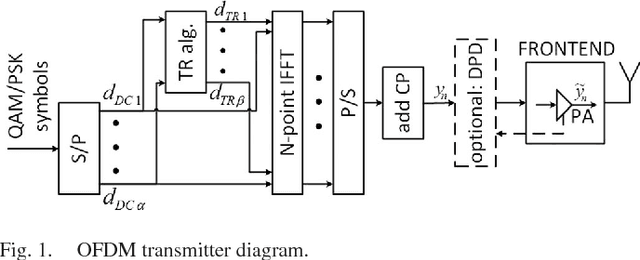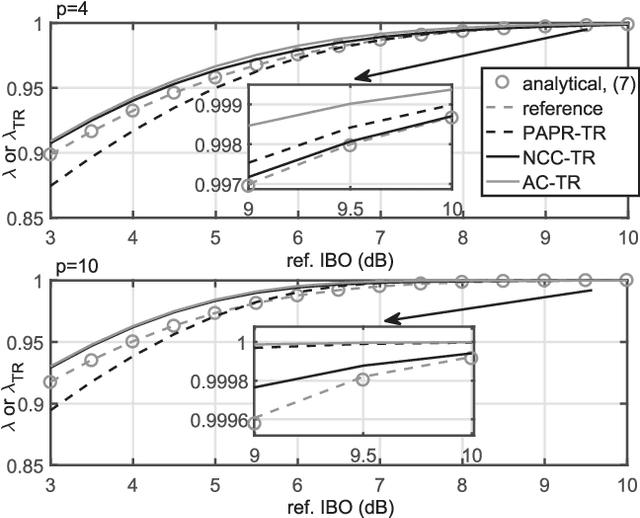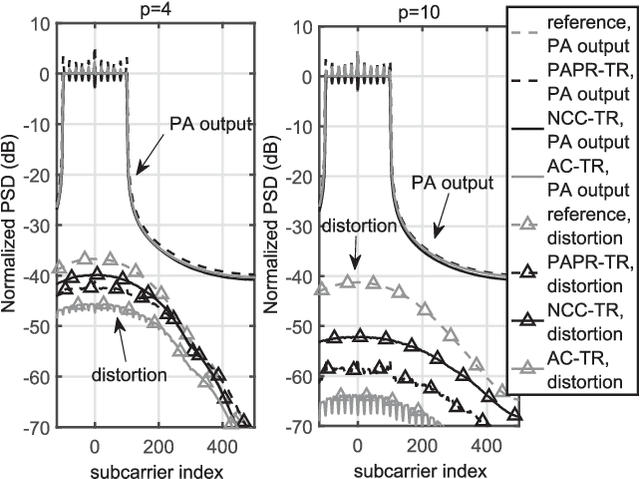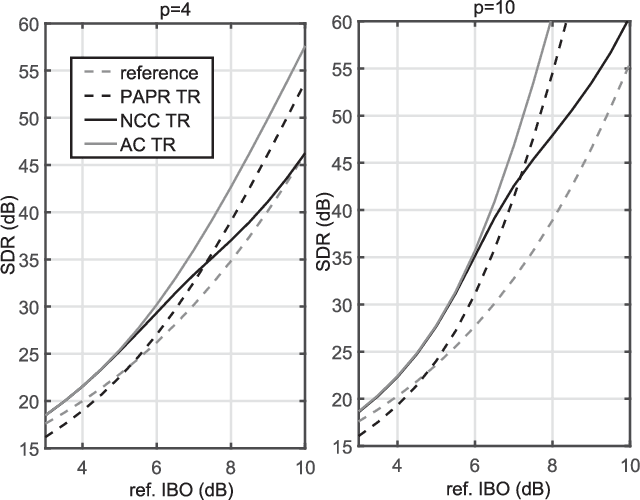Pawel Kryszkiewicz
Beam Management Driven by Radio Environment Maps in O-RAN Architecture
Mar 21, 2023Abstract:The Massive Multiple-Input Multiple-Output (M-MIMO) is considered as one of the key technologies in 5G, and future 6G networks. From the perspective of, e.g., channel estimation, especially for high-speed users it is easier to implement an M-MIMO network exploiting a static set of beams, i.e., Grid of Beams (GoB). While considering GoB it is important to properly assign users to the beams, i.e., to perform Beam Management (BM). BM can be enhanced by taking into account historical knowledge about the radio environment, e.g., to avoid radio link failures. The aim of this paper is to propose such a BM algorithm, that utilizes location-dependent data stored in a Radio Environment Map (REM). It utilizes received power maps, and user mobility patterns to optimize the BM process in terms of Reinforcement Learning (RL) by using the Policy Iteration method under different goal functions, e.g., maximization of received power or minimization of beam reselections while avoiding radio link failures. The proposed solution is compliant with the Open Radio Access Network (O-RAN) architecture, enabling its practical implementation. Simulation studies have shown that the proposed BM algorithm can significantly reduce the number of beam reselections or radio link failures compared to the baseline algorithm.
Federated Learning-Based Interference Modeling for Vehicular Dynamic Spectrum Access
Oct 03, 2022



Abstract:A platoon-based driving is a technology allowing vehicles to follow each other at close distances to, e.g., save fuel. However, it requires reliable wireless communications to adjust their speeds. Recent studies have shown that the frequency band dedicated for vehicle-to-vehicle communications can be too busy for intra-platoon communications. Thus it is reasonable to use additional spectrum resources, of low occupancy, i.e., secondary spectrum channels. The challenge is to model the interference in those channels to enable proper channel selection. In this paper, we propose a two-layered Radio Environment Map (REM) that aims at providing platoons with accurate location-dependent interference models by using the Federated Learning approach. Each platoon is equipped with a Local REM that is updated on the basis of raw interference samples and previous interference model stored in the Global REM. The model in global REM is obtained by merging models reported by platoons. The nodes exchange only parameters of interference models, reducing the required control channel capacity. Moreover, in the proposed architecture platoon can utilize Local REM to predict channel occupancy, even when the connection to the Global REM is temporarily unavailable. The proposed system is validated via computer simulations considering non-trivial interference patterns.
Frequency Selection for Platoon Communications in Secondary Spectrum Using Radio Environment Maps
Dec 30, 2021



Abstract:Platoon-based driving is an idea that vehicles follow each other at a close distance, in order to increase road throughput and fuel savings. This requires reliable wireless communications to adjust the speeds of vehicles. Although there is a dedicated frequency band for vehicle-to-vehicle (V2V) communications, studies have shown that it is too congested to provide reliable transmission for the platoons. Additional spectrum resources, i.e., secondary spectrum channels, can be utilized when these are not occupied by other users. Characteristics of interference in these channels are usually location-dependent and can be stored in the so-called Radio Environment Maps (REMs). This paper aims to design REM, in order to support the selection of secondary spectrum channel for intra-platoon communications. We propose to assess the channel's quality in terms of outage probability computed, with the use of estimated interference distributions stored in REM. A frequency selection algorithm that minimizes the number of channel switches along the planned platoon route is proposed. Additionally, the REM creation procedure is shown that reduces the number of database entries using (Density-Based Spatial Clustering of Applications with Noise) DBSCAN algorithm. The proposals are tested using real IQ samples captured on a real road. Application of the DBSCAN clustering to the constructed REM provided 7% reduction in its size. Utilization of the proposed channel selection algorithm resulted in a 35 times reduction of channel switches concerning channel assignment performed independently in every location.
Energy Savings by Task Offloading to a Fog Considering Radio Front-End Characteristics
Apr 26, 2021



Abstract:Fog computing can be used to offload computationally intensive tasks from battery powered Internet of Things (IoT) devices. Although it reduces energy required for computations in an IoT device, it uses energy for communications with the fog. This paper analyzes when usage of fog computing is more energy efficient than local computing. Detailed energy consumption models are built in both scenarios with the focus set on the relation between energy consumption and distortion introduced by a Power Amplifier (PA). Numerical results show that task offloading to a fog is the most energy efficient for short, wideband links.
Amplifier-Coupled Tone Reservation for Minimization of OFDM Nonlinear Distortion
Apr 20, 2021



Abstract:Nonlinear distortion of an OFDM signal is a serious problem when it comes to energy-efficient Power Amplifier(PA) utilization. Typically, Peak-to-Average Power Ratio(PAPR) reduction algorithms and digital predistortion algorithms are used independently to fight the same phenomenon. This paper proposes an Amplifier-Coupled Tone Reservation (ACTR)algorithm for the reduction of nonlinear distortion power, utilizing knowledge on thep redistorted PA characteristic. The optimization problem is defined. Its convexity is proved. A computationally-efficient solution is presented. Finally, its performance is compared against two state-of-the-art TR algorithms by means of simulations and measurements. The results show the proposed solution is advantageous, both in terms of nonlinear distortion power and the required number of computations.
Increasing Energy Efficiency of Massive-MIMO Network via Base Stations Switching using Reinforcement Learning and Radio Environment Maps
Mar 08, 2021



Abstract:Energy Efficiency (EE) is of high importance while considering Massive Multiple-Input Multiple-Output (M-MIMO) networks where base stations (BSs) are equipped with an antenna array composed of up to hundreds of elements. M-MIMO transmission, although highly spectrally efficient, results in high energy consumption growing with the number of antennas. This paper investigates EE improvement through switching on/off underutilized BSs. It is proposed to use the location-aware approach, where data about an optimal active BSs set is stored in a Radio Environment Map (REM). For efficient acquisition, processing and utilization of the REM data, reinforcement learning (RL) algorithms are used. State-of-the-art exploration/exploitation methods including e-greedy, Upper Confidence Bound (UCB), and Gradient Bandit are evaluated. Then analytical action filtering, and an REM-based Exploration Algorithm (REM-EA) are proposed to improve the RL convergence time. Algorithms are evaluated using an advanced, system-level simulator of an M-MIMO Heterogeneous Network (HetNet) utilizing an accurate 3D-ray-tracing radio channel model. The proposed RL-based BSs switching algorithm is proven to provide 70% gains in EE over a state-of-the-art algorithm using an analytical heuristic. Moreover, the proposed action filtering and REM-EA can reduce RL convergence time in relation to the best-performing state-of-the-art exploration method by 60% and 83%, respectively.
 Add to Chrome
Add to Chrome Add to Firefox
Add to Firefox Add to Edge
Add to Edge